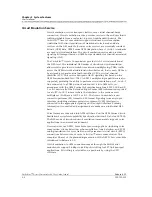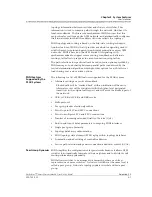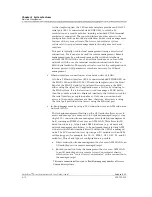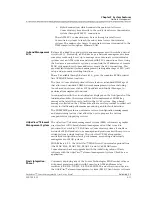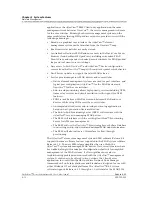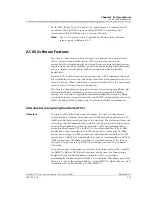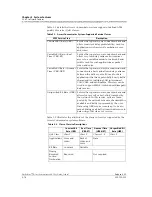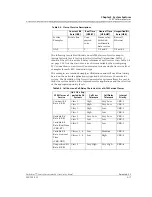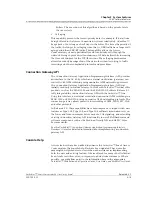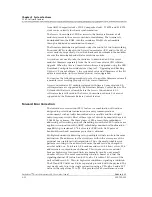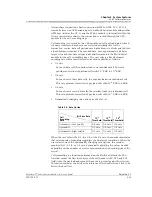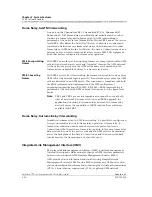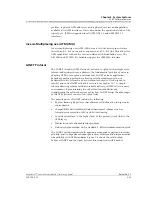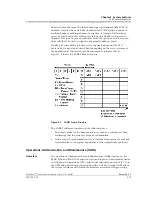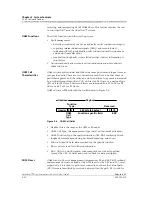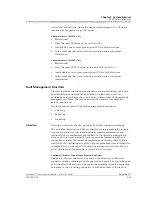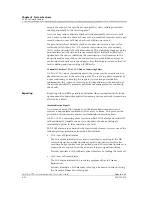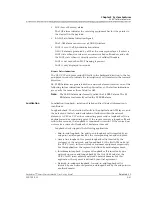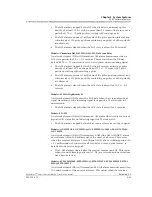
Chapter 3 System Features
AC 60 Software Features
3-18
255-700-025
PacketStar
™
Access Concentrator 60 User Guide
, Issue 1
Release 6.3.0
AQueMan™
classifies traffic based on service-level priorities and limits
congestion by addressing three dimensions of traffic management:
•
Cell loss versus cell delay for cell discard
As Table 3-5 indicates, there are VBR traffic types (for example, network
management data traffic) that are, in fact, higher in priority than some
CBR traffic (for example, off-peak cellular voice calls). The
AQueMan™
algorithm accounts for the service-level priorities of the traffic when
determining which cells to discard during traffic congestion. Thus, CBR
does not necessarily imply a higher priority.
•
Weighted priorities using queue depth ratios
To alleviate congestion in the network caused by lower-priority VBR
traffic,
AQueMan™
provides a weighted priority mechanism. This
mechanism allows lower-priority VBR data to be sent ahead of higher-
priority VBR data in cases where there are too many cells in lower-
priority VBR buffers and relatively few cells in higher-priority VBR
Table 3-4. Mapping AT M Service Classes to Access Concentrator Systems
Priority Levels
ATM Classes of
Service
Internal
Priority
PVC Connection
Configuration
Selections
Service Examples
Constant Bit
Rate (CBR)
CBR-1
CBR1
911 calls
CBR-2
CBR2
Preferred customers
CBR-3
CBR3
Standard
CBR-4
CBR4
Cellular
Variable Bit Rate
(VBR)
VBR-1
VBR-express
Network
management
Variable Bit Rate
Real Time
(VBR-RT)
VBR-2
VBR-RT1
Real-time videos
VBR-3
VBR-RT2
MPEG1-2/JPEG
Variable Bit Rate
Nonreal Time
(VBR-NRT)
VBR-4
VBR-NRT1
FR data
VBR-5
VBR-NRT2
FTP/e-mail transfer
Unspecified Bit
Rate (UBR)
VBR-6
UBR
IP data
Table 3-5. CBR and VBR Service-level Priorities
Priority
CBR
VBR
High
911 voice call
Network management
data
Low
Off-peak cellular
voice
IP data

